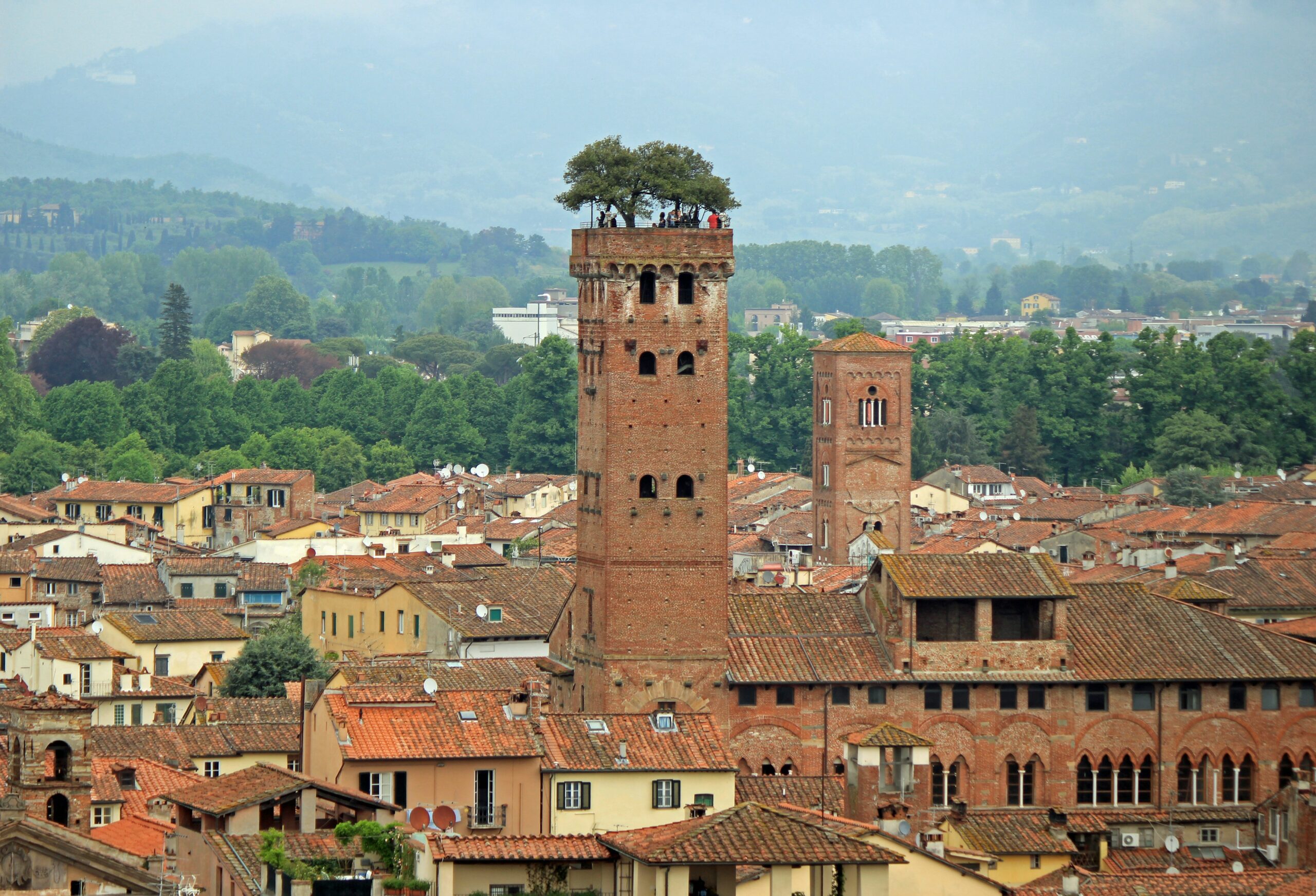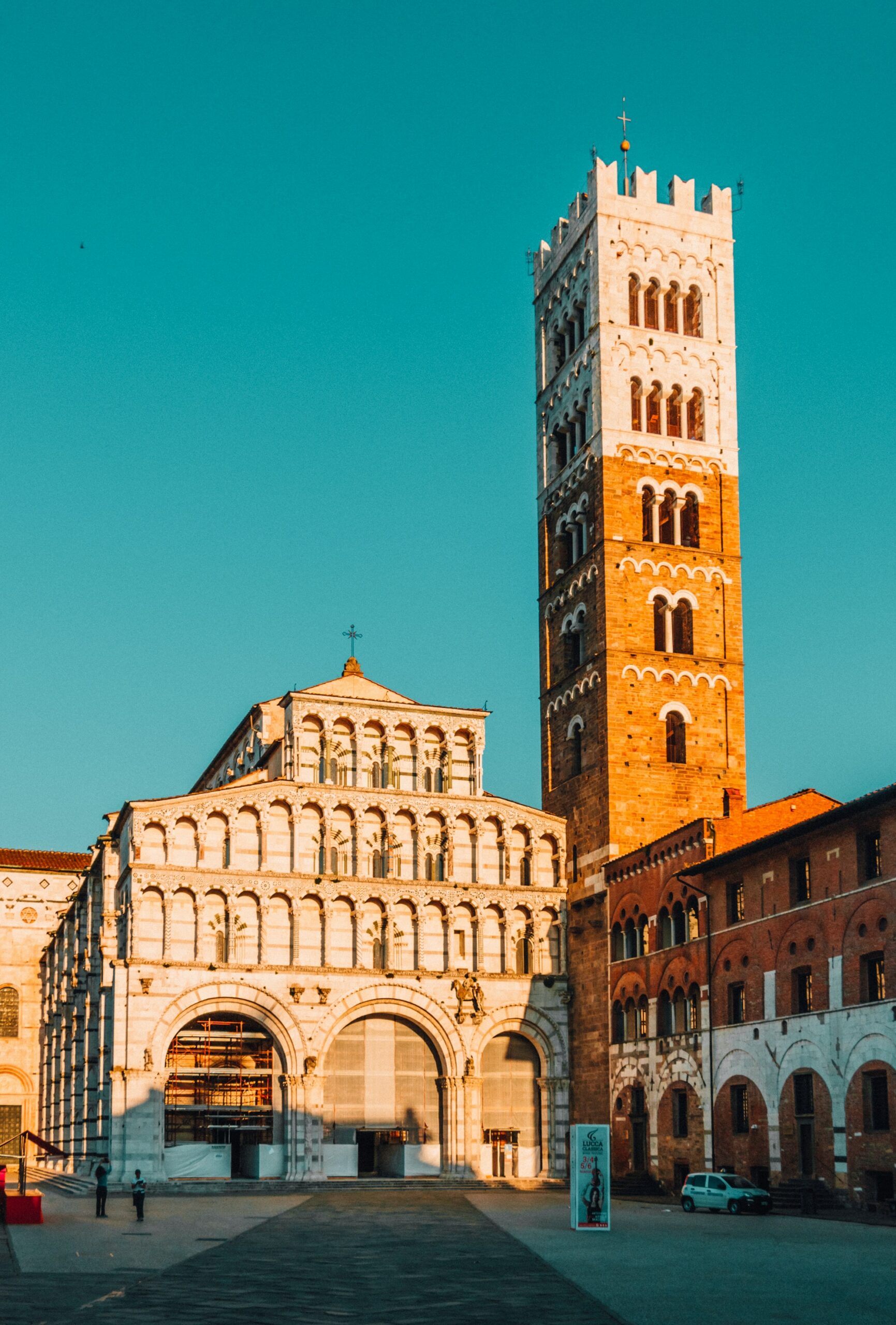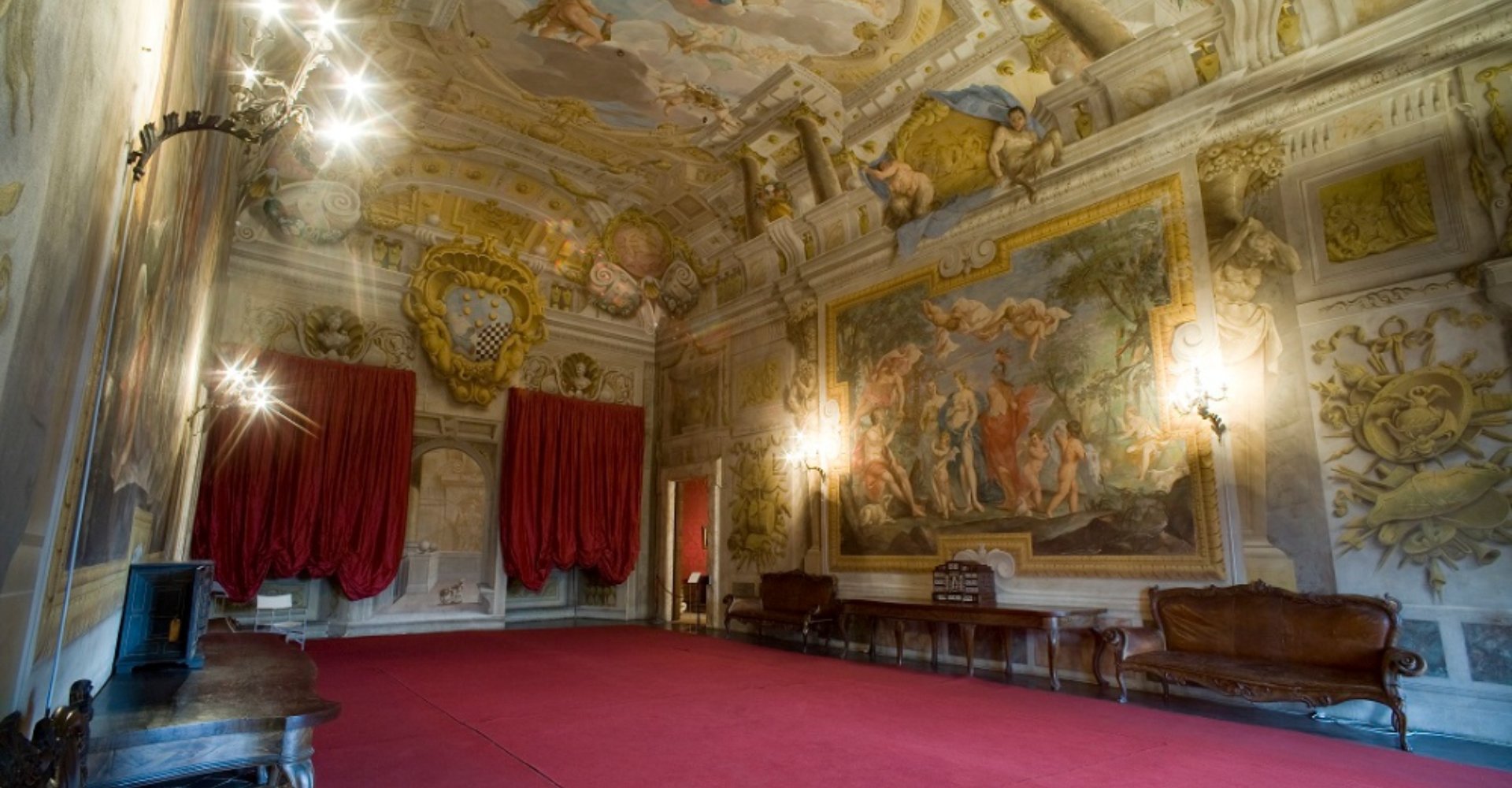Lucca
What to do
Lucca is one of the most beautiful and fascinating medieval cities in Italy, preserved with great care it wins over its visitors with its architectural beauty and cultural patromony. The symbol of the city are the imposing 16th-century walls that have remained completely intact, which surround the city and offer a previligious vantage point from which to admire the urban structure of Roman setting. Its hospitable climate and unspoiled nature surrounding it make it a must-see destination.
GUINIGI TOWER

The Guinigi Tower is a medieval tower built in the second half of the 14th century and an image of the city of Lucca. This imposing construction owes its name to the powerful family of bankers and merchants who built it. Standing 44.25 meters high, its uniqueness lies in the hanging garden placed on top where centuries-old holm oaks have been planted. Built of stone and red brick, the harmoniousness of the structure blends well with the foliage of the holm oaks. Reaching the roof garden is possible after climbing 230 steps, the view is breathtaking beyond the historic center you can see the hills of Lucca in the distance.
THE CATHEDRAL OF SAN MARTINO

The Cathedral of San Martino is a magnificent example of Romanesque architecture. The building was constructed at the behest of San Frediano, the bishop of Lucca, and over the centuries underwent several reconstructions. The polychromatic and asymmetrical façade features several small loggias sculpted by Guidetto da Como, the three portals framed by rich sculptural decoration narrate the life of Saint Martin. Inside, the Gothic atmosphere of the high naves blends with Romanesque elements to create an evocative ensemble. The church houses numerous masterpieces such as Ilaria del Carretto’s funeral monument, Ghirlandaio’s Sacred Conversation, Tintoretto’s Last Supper and Fra’ Bartolomeo’s altarpiece.
PALACE MANSI

Palace Mansi is a celebrated Baroque-style mansion built between the 16th and 17th centuries. The building celebrates the pomp and luxury of the lords of the time; the monumental apartment, which still retains the 18th-century furnishings, is the most valuable part of the palace. The Salone della Musica is decorated with frescoes by Gian Gioseffo del Sole while the various rooms feature Flemish tapestries and precious draperies. Inside these rooms is the National Picture Gallery of Lucca, where works by Tintoretto, Beccafumi, Pontormo and many other painters of the 1800s and 1900s such as Batoni, Tofanelli, and Ridolfi are preserved.

